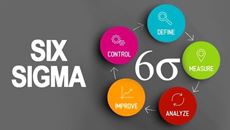- Delivery Method Online
- Professional Certificate
- 24hrs Suggested Study Time
- 3 Months Access
- Tutor Support
- Study On Any Device
- 3947 Students
Management and Supervision II

Learn how to be an effective manager or supervisor. Master the basics of communicating effectively, and learn tools for developing your own interpersonal skills.
What does a supervisor or a manager need to know? Have you ever felt technically prepared for a supervisor's role, yet felt defeated by all of the people issues that seem to arise? You are not alone; many people feel the same way.
In this self-paced online course, you will learn how to be a more effective manager or supervisor. You will master the basics of communication, because effective communication is essential in your quest to be a good manager or supervisor.
In addition, we will discuss how you can develop your interpersonal skills, by understanding and dealing with the various people issues that arise at work. We are going to show you how you can understand various personality traits--in yourself and in others--and how they impact the ability to get the job done. These traits include emotional intelligence, the need for power, conscientiousness, agreeableness, and more.
You will be able to assess your own personality, as well as the personalities of your co-workers and boss, and you'll develop a plan of action to improve both your interpersonal skills and your work relationships.
Courses are delivered to you through expertly executed lessons, online instruction and interaction with like-minded students. Our courses are designed to deliver all of the benefits of studying in a classroom whilst giving you the flexibility to study at a time and place to suit your needs. You can access your classroom 24/7 from any device with an internet connection.
This course has a 3 month duration. You'll complete comprehensive lessons, quizzes and assignments before submitting your final exam at the end of the course to achieve your certificate. Courses must be completed within the 3 month access period.

Patricia Addesso
Patricia Addesso has worked for over 20 years in retail, academic and telecommunications organisations. She has a doctorate in Industrial/Organisational Psychology, and well-grounded in the theory of human behavior at work. In addition, she has he... Read more
Read Patricia Addesso's ProfileFrequently Asked Questions
What people are saying about our courses
The Learning Environment
From the moment that you enrol in the Management and Supervision II you will become an integral part of our learning community. You'll find yourself with the freedom to learn at a speed that suits you, on any device, from anywhere in the world. Achieving your career goals no longer has to mean compromising family and work commitments.
Ready to get started?
Enrol NowOur Values
Learn At Your Own Pace
We believe in personalised learning. That's why we provide all the tools and support you need to succeed at your own pace. With flexible learning, you'll stay motivated and retain more information. Plus, you can balance your studies with work and family commitments to make your dreams a reality.
We Won't Break The Bank
Education should be accessible to anyone who wants to learn. That's why we offer some of the most competitive prices in the industry with payments plans for just $25 per week. Investing in your future is a smart choice and doesn’t have to break the bank.
Industry-Led Courses
There's no better way to learn than from experts with years of experience in your field. That's why each of our 200+ industry-led courses are designed to give you a real-life perspective on your industry. With our expert mentors, you'll learn from people who have a wealth of knowledge and experience, and who are passionate about sharing it with you.
Get The Personal Support You Deserve
At Vibe Learning, we're real people who are dedicated to providing you with personal support every step of the way. Our industry experts are not only professional and knowledgeable but also incredibly passionate about sharing their expertise with you. With their guidance, you'll gain invaluable insights and practical knowledge to help you succeed.
Still looking?
Check out the following courses related to Management and Supervision II:





